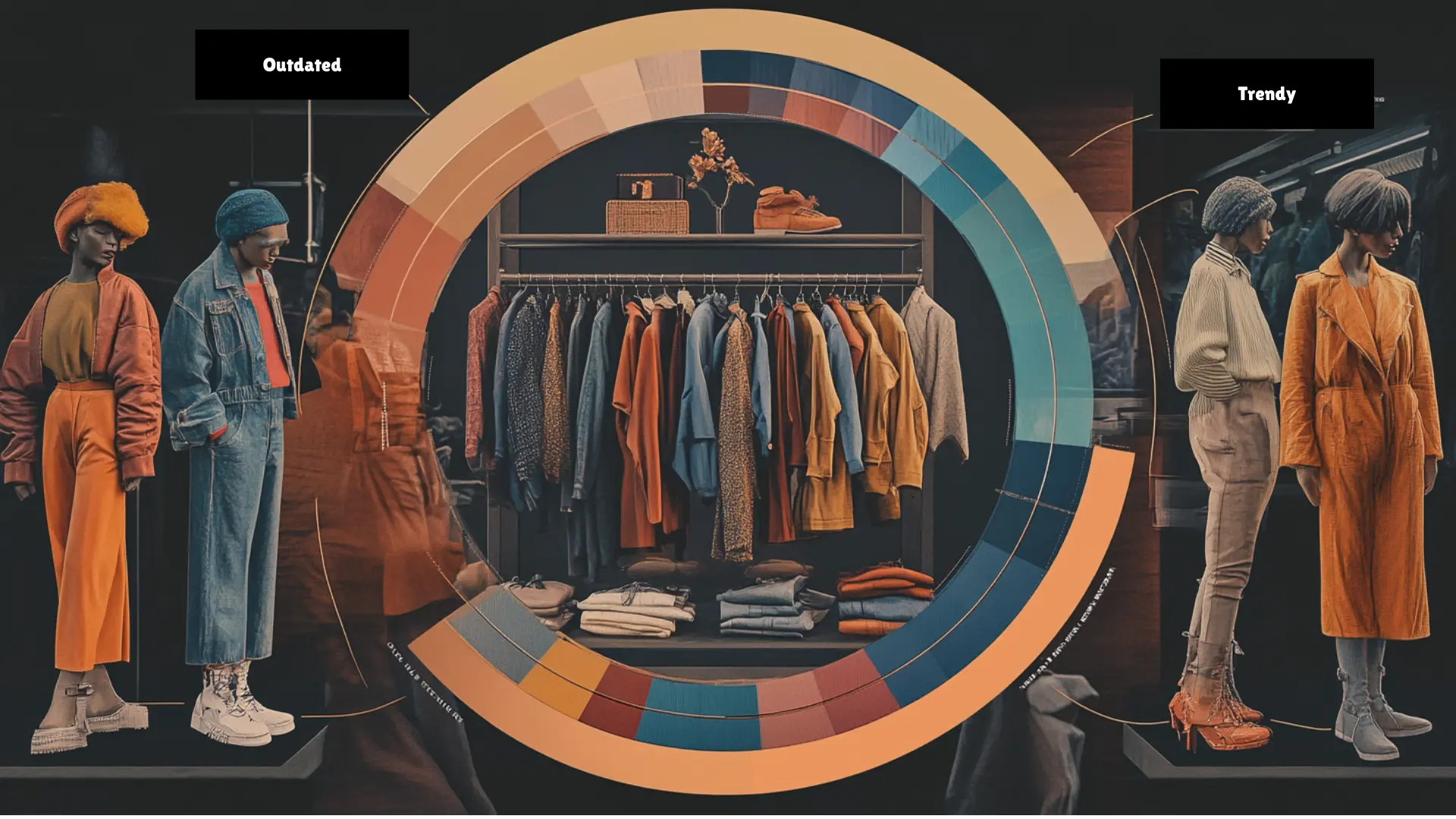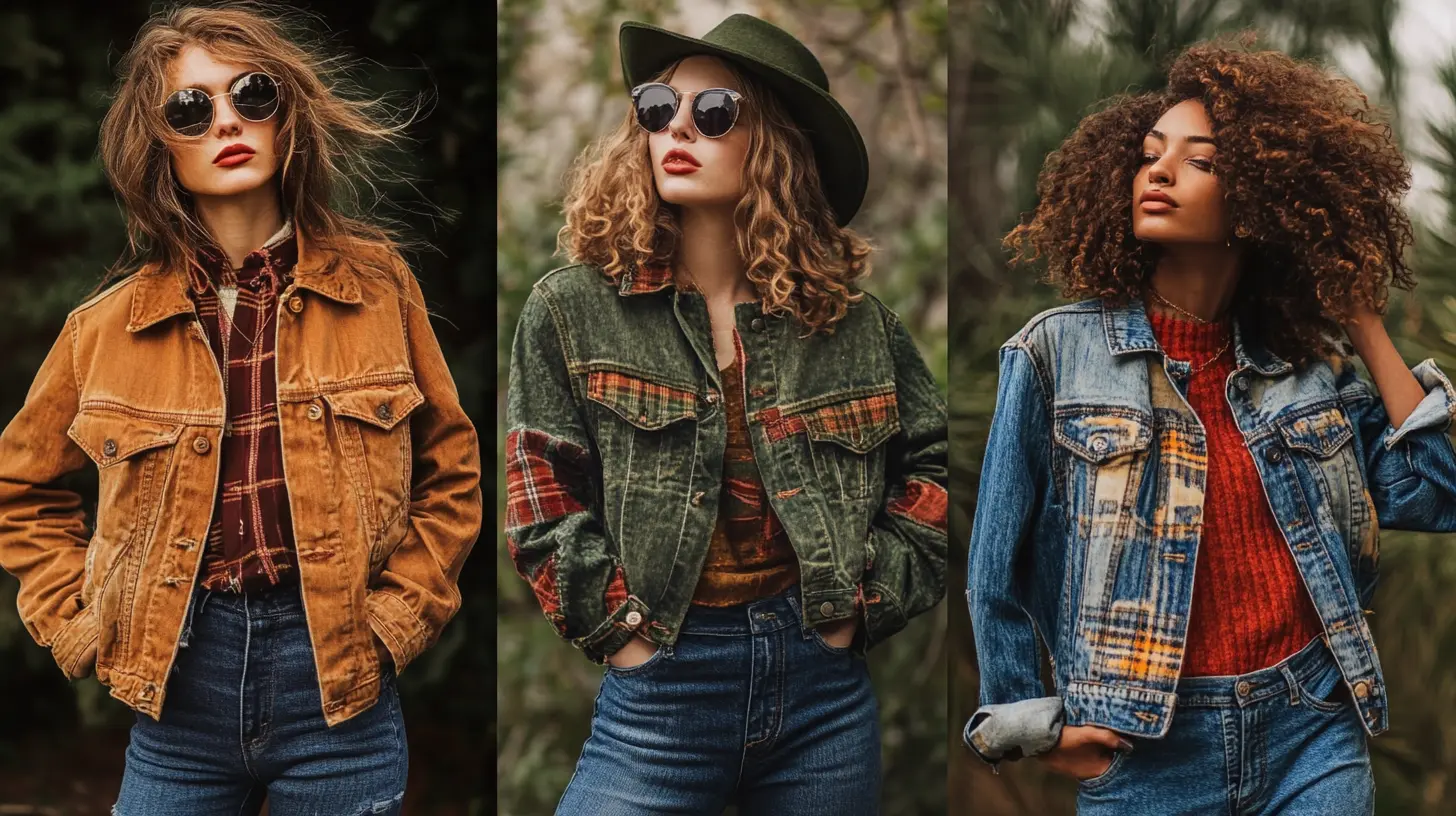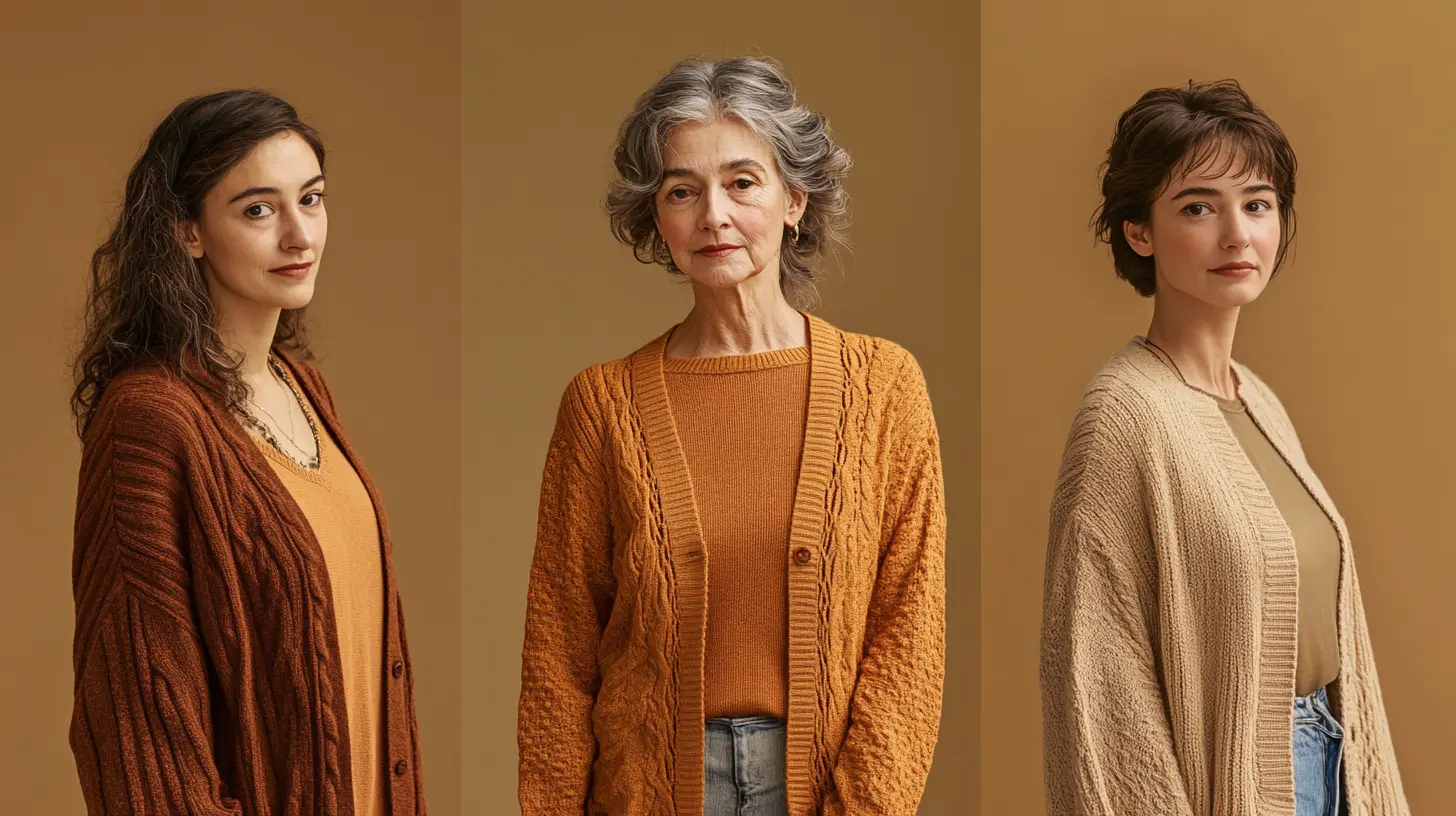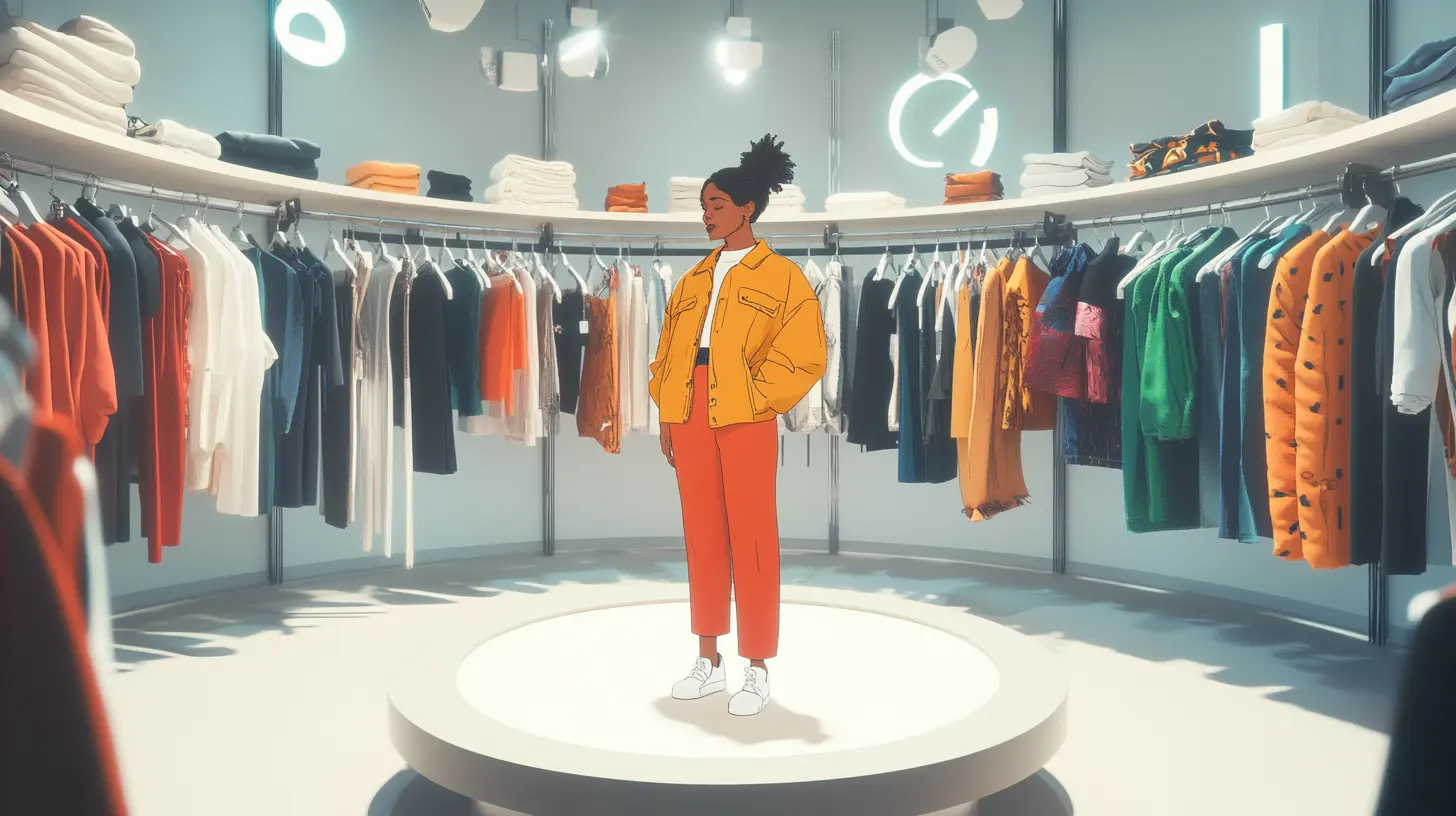Your mother sighs, watching you excitedly unbox platform shoes that look suspiciously like the ones gathering dust in her attic. “I wore those in college,” she says, while you insist they’re completely different because yours have chunky buckles or pastel colors or whatever minuscule detail makes them feel revolutionary rather than recycled.
The truth? We’re all caught in fashion’s most predictable cycle—where what was once embarrassingly outdated becomes suddenly, inexplicably cool again. But if fashion is just repeating itself, why does each revival feel so fresh? And why do we keep opening our wallets for trends we’ve technically already seen?
The Clockwork of Fashion Revival#

Fashion’s revival patterns follow such predictable timing that industry insiders can almost set their watches by them:
The 20-year cycle: The most dominant pattern, where trends typically resurface approximately two decades after their original popularity. This explains why Y2K fashion (butterfly clips, low-rise jeans, baby tees) dominates Gen Z aesthetics now, 90s grunge captured Millennials in the 2010s, and 80s neon and shoulder pads captivated the 2000s.
The 40-year cycle: A secondary pattern where more dramatic revivals occur after roughly four decades—enough time for the original trend to move from “outdated” through “vintage” to “historically significant.”
The generational amnesia: Each revival coincides suspiciously with the coming-of-age of people who were too young to experience the trend the first time around.
This clockwork revival creates a strange paradox: fashion simultaneously changes constantly while never truly creating anything new. We live in an endless loop of recontextualized aesthetics.
The Science Behind Fashion’s Déjà Vu#
Why does fashion follow such precise cyclical patterns? The answer lies at the intersection of psychology, sociology, and economics:
The Psychology of Novelty and Nostalgia#
Humans possess two seemingly contradictory desires that drive fashion cycles:
Stimulation through novelty: Our brains are wired to seek new experiences and visual stimuli—we literally get dopamine hits from fresh aesthetics
Comfort through familiarity: We simultaneously crave the psychological security of recognition and nostalgia
These opposing forces create a perfect condition for retro revival—styles that are simultaneously novel (to young consumers) and familiar (to the broader culture). This explains why each generation “discovers” recycled trends with genuine excitement rather than cynicism.
Dr. Carolyn Mair, cognitive psychologist specializing in fashion psychology, explains: “The brain craves the optimal balance between novelty and familiarity—revived trends hit this sweet spot perfectly, feeling both fresh and reassuringly recognizable.”
The Cultural Machinery of Fashion Recycling#
Fashion revivals don’t happen spontaneously—they’re part of sophisticated cultural and commercial systems:
Documentation and Archiving
Cultural Preservation
Each fashion era is extensively photographed, filmed, and documented, creating rich visual archives for future reference. Fashion magazines, films, music videos, and now social media platforms preserve style moments in collective visual memory. These archives serve as inspiration boards for designers who then revive and reinterpret these documented aesthetics decades later.Generational Identity Formation
Social Psychology
Each generation needs to establish its distinct visual identity separate from the one immediately preceding it. This creates a natural skip pattern, where young people reject their parents' aesthetics but find their grandparents' style intriguing. Generation Z embraces Y2K fashion partly because it represents a pre-social media, pre-smartphone era they never experienced but find fascinating—while rejecting the early 2010s hipster aesthetics they associate with Millennials.Industry Economic Imperatives
Commercial Factors
The fashion industry requires constant newness to drive sales, but truly original design is difficult and risky. Reviving proven successful trends with modern adaptations offers the perfect solution: predictable consumer appeal with minimal creative risk. Fast fashion accelerates this process, compressing what used to be multi-year cycles into seasonal ones, creating "micro-revivals" alongside the larger generational patterns.Celebrity and Influencer Amplification
Trend Catalysts
Vintage fashion moments get dramatic reappraisals when influential celebrities reference them. Bella Hadid wearing a vintage Versace dress from the 90s, Dua Lipa channeling 70s disco aesthetics in her videos, or Zendaya recreating iconic 60s looks immediately validates these eras for younger audiences who may have previously considered them irrelevant. These celebrity endorsements transform old styles from "outdated" to "iconic" almost overnight.
This machinery explains why fashion revivals feel organic despite being highly manufactured. Each cycle appears to arise from authentic cultural interest while actually being carefully orchestrated by industry forces that benefit from predictable consumer behavior.
Not Copies, But Remixes– How Each Revival Transforms the Original#
No fashion revival simply replicates the original era. Each reincarnation selectively adapts elements while discarding others, creating something that references the past while reflecting current values and technologies.
Consider how today’s Y2K revival differs from the actual fashion of 1999-2003:
Technology Integration: Modern revival incorporates technical fabrics, sustainable materials, and performance features absent from original pieces
Body Inclusive Adaptation: Contemporary versions often modify extreme elements (like ultra-low-rise waists) to accommodate more diverse body types and current comfort expectations
Cultural Context Shifts: Original Y2K fashion emerged in an optimistic tech boom before 9/11, while its revival occurs in a climate-conscious, post-pandemic digital native generation
Accessorizing Differences: Original Y2K paired items differently than current styling, which incorporates elements from other eras and contemporary streetwear
This transformation process makes each revival simultaneously derivative and original. Fashion historian Valerie Steele notes: “Revival never means exact reproduction.
Each generation reinterprets the past through its own cultural lens, creating something that’s both referential and new.”
The Mythology of Personal Discovery#
Perhaps the most fascinating aspect of fashion revivals is how each generation experiences recycled trends as personal discovery rather than repetition. This psychological phenomenon has several components:
1. The Illusion of Originality#
Each generation believes they’ve discovered something unique, even when older generations immediately recognize it:
“When teens ‘discover’ mom jeans or scrunchies, they’re genuinely experiencing the thrill of novelty. The fact that their parents wore these items doesn’t diminish the authenticity of their excitement—it simply wasn’t part of their lived experience until now.” — Dr. Jennifer Baumgartner, Clinical Psychologist and Author of “You Are What You Wear”
2. The Context Renewal Effect#
Old styles in new contexts genuinely create fresh cultural meanings:

A cropped cardigan in the 1990s carried completely different cultural associations than the same item does in 2025.
When Gen Z wears platform sneakers, they’re not signaling the same cultural messages as their counterparts in the 1990s—the visual language has been entirely recoded.
3. The Curatorial Selection Process#
Each revival carefully edits the past, selecting specific elements while conveniently forgetting the less appealing aspects:
- Y2K revival embraces baby tees and mini-skirts but largely ignores the problematic “heroin chic” body ideals
- 70s revival celebrates wide-leg pants and earthy tones but minimizes the highly flammable synthetic fabrics
- 90s revival adopts flannel and combat boots but modifies the sometimes shapeless silhouettes
This selective memory allows each generation to romanticize the past while adapting it to contemporary tastes and values.
The Economic Engines Behind Fashion’s Repetition#
Fashion’s cyclical nature isn’t just a cultural curiosity—it’s a profitable business model that shapes the entire industry:
Several economic factors accelerate fashion’s recycling tendency:
The Archive Monetization Strategy#
Major fashion houses have discovered that their archives represent immense untapped value:
- Brands like Versace, Dior, and Saint Laurent regularly mine their own design history for “new” collections
- Archive-inspired designs require less development investment while carrying heritage prestige
- Vintage references create multi-generational appeal, attracting both nostalgic older consumers and discovery-mode younger ones
The Second-Hand Market Influence#
The explosive growth of second-hand fashion platforms creates both opportunity and pressure:
- Circular Fashion Economy: Platforms like Depop, ThredUp, and Vestiaire Collective have normalized wearing clothes from previous decades
- Price Competition: Vintage originals compete directly with new recreations, pushing brands to add value through technical improvements
- Trend Acceleration: These platforms create mini-revivals through algorithmic promotion of specific vintage aesthetics
The Fast Fashion Appropriation Cycle#
Fast fashion retailers have perfected the art of rapidly commercializing revival trends:
- They scan vintage references and early adopter styling
- Quickly produce modernized, mass-market versions
- Saturate the market until ubiquity creates inevitable backlash
- Move on to the next revival cycle
This process has accelerated what used to be decade-long fashion cycles into seasonal or even monthly revivals, creating “micro-nostalgias” for increasingly recent periods.
Why Some Trends Return While Others Stay Dead#
Not all fashion trends experience resurrection. What determines which styles get revived and which remain fashion history casualties?
Revival Winners
What Returns
**Visual Distinctiveness**: Styles with strong, immediately recognizable visual signatures (70s bell bottoms, 80s shoulder pads) **Comfort & Practicality**: Items that offered functional benefits beyond aesthetics (high-waisted pants, chunky sneakers) **Cultural Moment Attachment**: Styles connected to beloved cultural movements or attitudes (90s grunge, Y2K tech optimism) **Adaptability to Modern Life**: Designs that can reasonably function in contemporary contexts (midi skirts, oversized blazers)Revival Losers
What Stays Dead
**Extreme Body Modifications**: Styles requiring dramatic physical alterations (Victorian corsetry that displaced organs) **Technically Obsolete Constructions**: Garments dependent on outdated production methods (certain types of hand-detailed corsetry) **Deeply Problematic Associations**: Styles inextricably linked to offensive cultural contexts (colonial-era appropriative fashions) **Fundamentally Impractical Designs**: Items that severely restricted movement or function (hobble skirts that prevented walking)
These patterns reveal that fashion revival depends on a complex algorithm of visual appeal, cultural significance, practical adaptability, and ethical compatibility with contemporary values.
Designer and fashion historian Alexander Fury notes: “Fashion’s relationship with its past is highly selective. We resurrect what speaks to current needs and concerns while conveniently forgetting what contradicts our present sensibilities.”
The Psychological Comfort of Fashion Cycles#

There’s something deeply reassuring about fashion’s predictable nature. In an era of unprecedented change and uncertainty, fashion cycles provide a sense of continuity and order:
Intergenerational Connection: Trend revivals create rare moments of connection between generations—opportunities for shared reference points in otherwise divergent experiences
Cultural Continuity: The recycling of aesthetic languages reassures us that despite technological and social change, human expression maintains certain constants
Identity Anchoring: Each revival allows us to place ourselves within a larger historical narrative, connecting personal style choices to broader cultural movements
This psychological comfort factor helps explain why we don’t tire of fashion’s repetition—it provides a rhythmic predictability in contrast to accelerating technological and social change.
The Future of Fashion’s Past#
How might fashion’s relationship with its history evolve in coming decades? Several emerging forces are reshaping the revival landscape:
Digital Fashion Archives & AI Inspiration#
As fashion’s entire history becomes digitized and searchable, designers gain unprecedented access to reference material:
- AI tools can now analyze millions of historical fashion images to identify unexplored revival opportunities
- Digital archives allow much more specific references than the general decade aesthetics of past revivals
- Algorithm-driven fashion platforms suggest increasingly personalized nostalgic recommendations
This technology enables micro-targeted revivals that might reference highly specific sub-movements or even individual collections rather than entire decades.
Sustainability Driving Deeper Revival#
Environmental concerns are pushing the industry toward more substantive engagement with fashion history:
- Circular design principles encourage studying how older garments were built for longevity
- Revival increasingly includes production methods and durability features, not just aesthetic elements
- Rental and resale platforms normalize wearing actual vintage rather than reproductions
This shift may transform fashion revival from surface-level visual reference to deeper engagement with historical construction and longevity principles.
Cross-Cultural Revival Expansion#
Globalization and increased cultural exchange are broadening the scope of what gets revived:
- Non-Western fashion histories gain recognition in global revival cycles
- Regional aesthetics receive global platforms through social media
- Cultural exchange creates hybrid revivals that reference multiple traditions simultaneously
This expansion suggests future revivals may draw from a much more diverse set of references rather than cycling through the same Western fashion eras repeatedly.
Finding Your Personal Style Amid Revival Chaos#
Developing Revival Intelligence#
Rather than blindly following revival trends, consider developing a more sophisticated relationship with fashion history:
Recognize pattern over product - Understanding the cyclic nature helps you make more intentional choices about which revivals resonate with your personal aesthetic
Seek original context - Learn about the cultural conditions that produced iconic styles to appreciate their significance beyond visual appeal
Find personal connection points - Identify which historical eras naturally speak to your sensibilities regardless of current revival status
Practice selective adoption - Choose elements from various revivals that work together rather than embracing entire era aesthetics wholesale

This approach transforms you from passive consumer of revival trends to active curator of fashion history, creating a personal style that transcends the limitations of any single revival moment.
The Eternal Return#
Fashion’s cyclical nature reflects deeper philosophical questions about originality, history, and human creativity:
“Fashion is one of the most accessible and visible examples of Nietzsche’s concept of eternal return—the idea that existence recurs in an infinite cycle. Each fashion revival demonstrates how we continuously revisit and reinterpret the past while believing we’re creating something new.” — Dr. Elizabeth Wilson, Author of “Adorned in Dreams”
This philosophical dimension gives fashion’s repetition a certain poignancy. Each revival represents both the impossibility of true originality and the inevitable transformation that occurs when the past is filtered through the present.
Perhaps fashion’s greatest lesson is that nothing is ever truly new, yet nothing ever returns exactly the same—a paradox that extends far beyond our closets.
Fashion Cycle Questions & Complexities
Are fashion revivals speeding up due to social media?
Do all cultures experience fashion cycles the same way?
Can understanding fashion cycles help you predict future trends?
Why do some people resist fashion revivals?
Is anything in fashion truly original anymore?
Perhaps we keep falling for revival trends not because we’re unaware of fashion’s repetition, but because each cycle offers something psychologically valuable: the chance to reimagine the past with the benefit of present perspective, creating something that honors history while still feeling distinctly of the moment.
